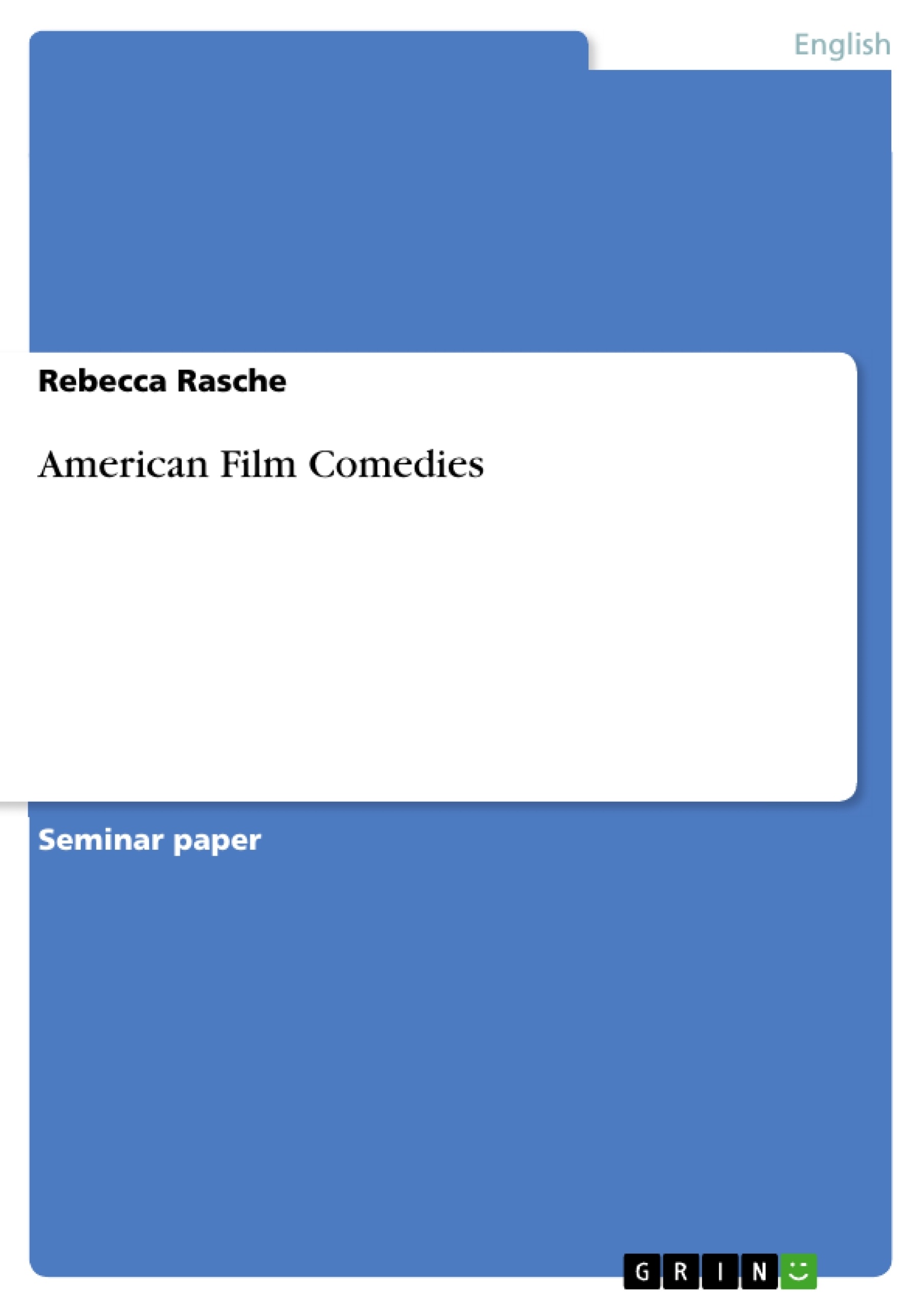This dialogue from “Cactus Flower” is very likely to catch the attention of a 21stcentury woman instantly because of its chauvinist, discriminating tone against women. It is very intriguing to find this conversation in a film which was shot in the so-called liberal sixties, and which raised the question to me whether patriarchal values are only detectable in older romantic comedies such as “Cactus Flower” (1969) or whether these values became obsolete in newer romantic comedies such as “Something’s Gotta Give” (2003). In spite of the constant success of romantic comedies─ “There’s Something about Mary” (2001), for instance, passed the “gold record line” of $100 million with flying colours─ little attention has been paid to analyzing this film genre. The few critics who analyzed and interpreted film comedies tend to focus on masterpieces and on auteur films such as “The General” by Buster Keaton, but they are likely to neglect romantic comedies. Therefore, this paper focuses deliberately on romantic comedies which are neither in the canon of masterpieces nor directed by an auteur.
Interestingly, critics have not been able to agree on a final definition of romantic comedies, for which reason I chose to draw on Thomas Schatz’s definition: Romantic comedies are “fast-paced, witty comedies of manners exploiting the foibles of America’s leisure class” (Classical Hollywood Comedies 126). An additional characteristic of romantic comedies, is the fact that focus is put on the mating of the major characters, with the result that gender quarrels play a major role. Consequently, romantic comedies propose to the spectatorship how to find true love, and they communicate implicitly universal patterns of mating and morality.
Inhaltsverzeichnis (Table of Contents)
- Introduction
- Film Semiotic Approaches and Theory on Romantic Comedies
- Semantics
- Typical Plots of Romantic Comedies
- Stereotypical Characters in Romantic Comedies
- Mise-en-scene
- Analysis of Mating in Romantic Comedies
- Cactus Flower
- Characters
- Plots
- Mise-en-scene
- Something's Gotta Give
- Characters
- Plots
- Mise-en-scene
- Patriarchal Patterns of Mating in Romantic Comedies
- Summary
Zielsetzung und Themenschwerpunkte (Objectives and Key Themes)
This paper aims to analyze the portrayal of mating and patriarchal values in romantic comedies, specifically comparing the films "Cactus Flower" (1969) and "Something's Gotta Give" (2003). It examines whether these values remain prevalent in more modern romantic comedies, or if they have become obsolete.
- Analysis of patriarchal mating patterns in romantic comedies
- Comparison of older and newer romantic comedies
- Examination of the role of gender and power dynamics in romantic relationships
- Exploration of how romantic comedies communicate societal norms and values
- Discussion of the enduring popularity of romantic comedies despite potentially outdated representations
Zusammenfassung der Kapitel (Chapter Summaries)
The paper begins by introducing the concept of film semiotic approaches and their application to the analysis of romantic comedies. This section outlines the key elements of romantic comedy narrative and characterization, focusing on the role of mating and gender dynamics in shaping the plot and characters.
The analysis section then delves into two specific romantic comedies, "Cactus Flower" and "Something's Gotta Give." Each film is examined in terms of its characters, plots, and mise-en-scene, with a particular focus on how mating and patriarchal values are represented and presented to the audience.
Schlüsselwörter (Keywords)
The paper explores the themes of romantic comedies, gender roles, patriarchal values, mating patterns, film semiotics, mise-en-scene, and comparative analysis. It investigates the portrayal of these themes in specific films, "Cactus Flower" and "Something's Gotta Give," offering a critical examination of their representation and potential impact on audience understanding.
- Arbeit zitieren
- Rebecca Rasche (Autor:in), 2006, American Film Comedies, München, GRIN Verlag, https://www.hausarbeiten.de/document/62235


